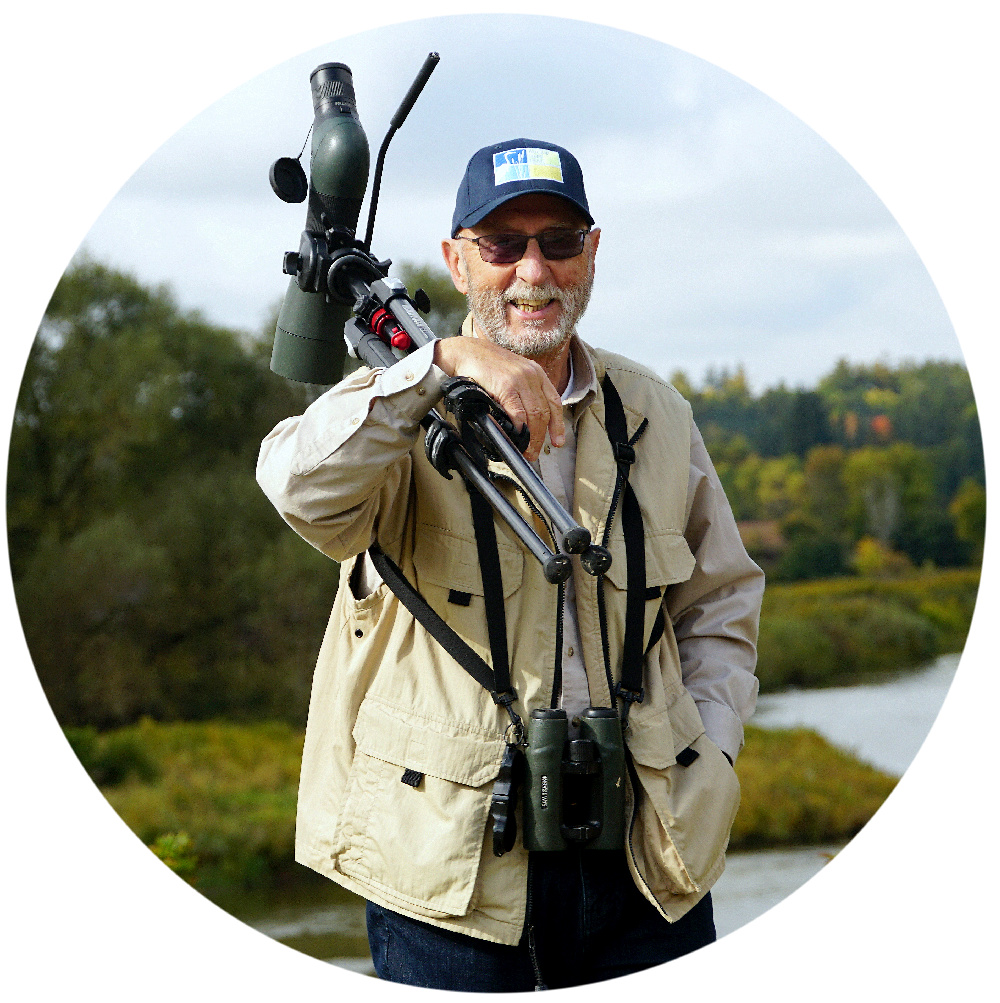Winter brings its challenges but its rewards are many, not the least of which is the arrival of iconic winter species into our area. Where else can you leave home for a couple of hours birding and be almost certain of finding Snowy Owls Bubo scandiacus, Rough-legged Buzzards Buteo lagopus, Snow Buntings Plectrophenax nivalis and Horned Larks Eremophila alpestris? Maybe even a Lapland Longspur Calcarius lapponicus or two thrown in for good measure?
Red-tailed Hawks Buteo jamaicensis are very common; this individual was advantageously perched to scan the snow for telltale signs of its rodent prey.
I couldn't help but notice the profusion of Tamarack cones throughout the area. This is the favoured food of crossbills, but so far this winter there have been no reports of either species locally.
The star of the show is unquestionably the magnificent Snowy Owl.
Miriam and I were able to find three but there are more around and there are other likely locations to check. On Tuesday our regular birding jaunt will feature a dedicated search for Snowy Owls and Snow Buntings...and whatever else we can find of course.
Our first sighting was of a very distant male and female together. Miriam's picture is reproduced here merely to show the proximity of the two birds, which led us to wonder whether they were a mated couple that had retained the pair bond after the breeding season, uncommon though this may be. The male is on the fence post, smaller than the female (sexual dimorphism is pronounced in Snowy Owls).
Some yahoo couldn't be content with observing the owls and trekked across a farmer's field to try to get closer for a photograph, flushing the birds. The female landed in a field some 500 metres or so away, and we took our pictures without disturbing her again. They are not the best, but they provide a record of what we saw that day.
For anyone reading this blog, please adopt a good code of conduct when observing these owls and don't disturb them unnecessarily. They are concerned with daily survival and any disruption affects their ability to forage, sleep and conserve energy. We all like to get a good picture, but as my good friend Jan Windhouwer once reminded me, the best picture is the one stored in your memory.
The third Snowy Owl we observed was a male resting on the ground. This image shows clearly how difficult it can be to spot a white bird, at some distance, in a white landscape. To make things even more problematic this individual is a male in pristine white plumage. Look at the centre of the picture about a third of the way up from the bottom and you will see the bird.
But Snowy Owls at times can be very easy to photograph and I am showing some of the pictures from our archives to show you how close we have been to these birds from time to time.
I have no idea how many Snowy Owls I have seen but it is well into the hundreds, but there has never, and I mean never, been an occasion when the sight of one of these birds fails to fill me with awe, and the cold bite of a winter's wind suddenly doesn't seem so bad anymore.






































